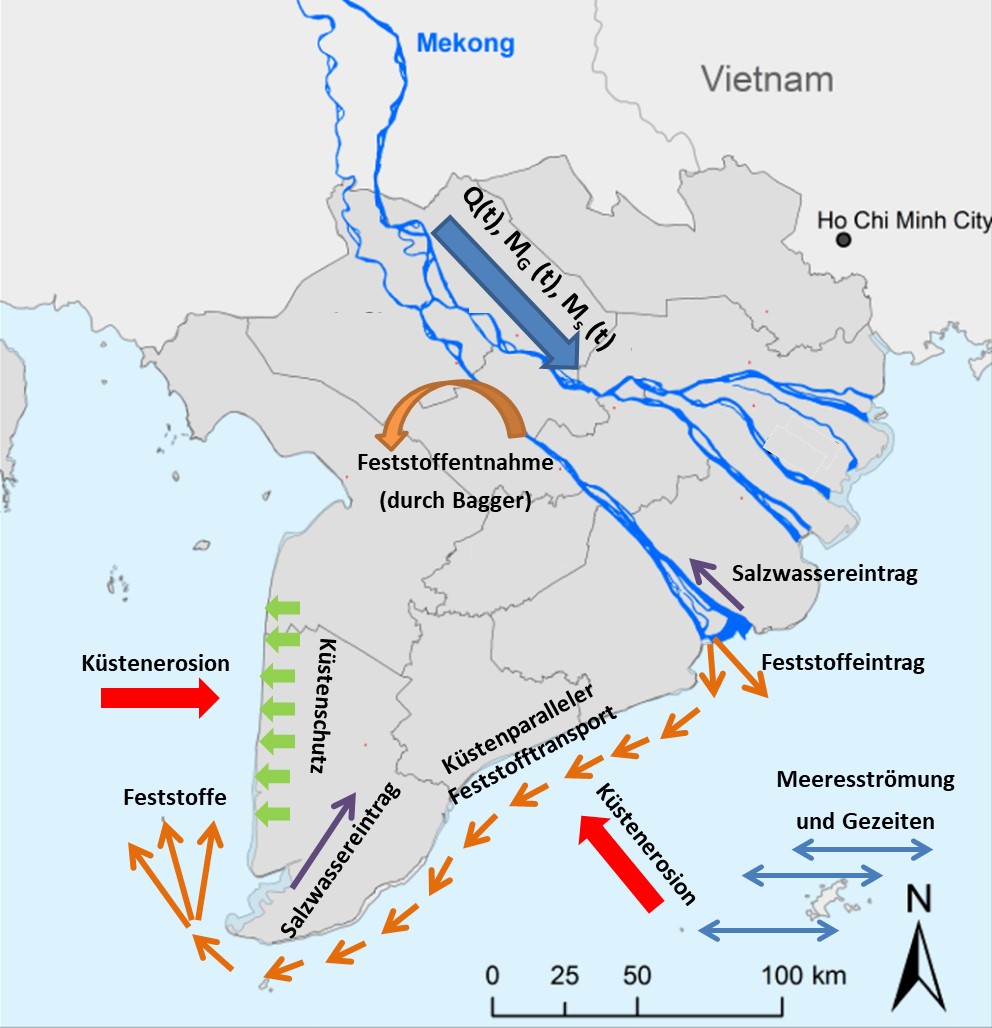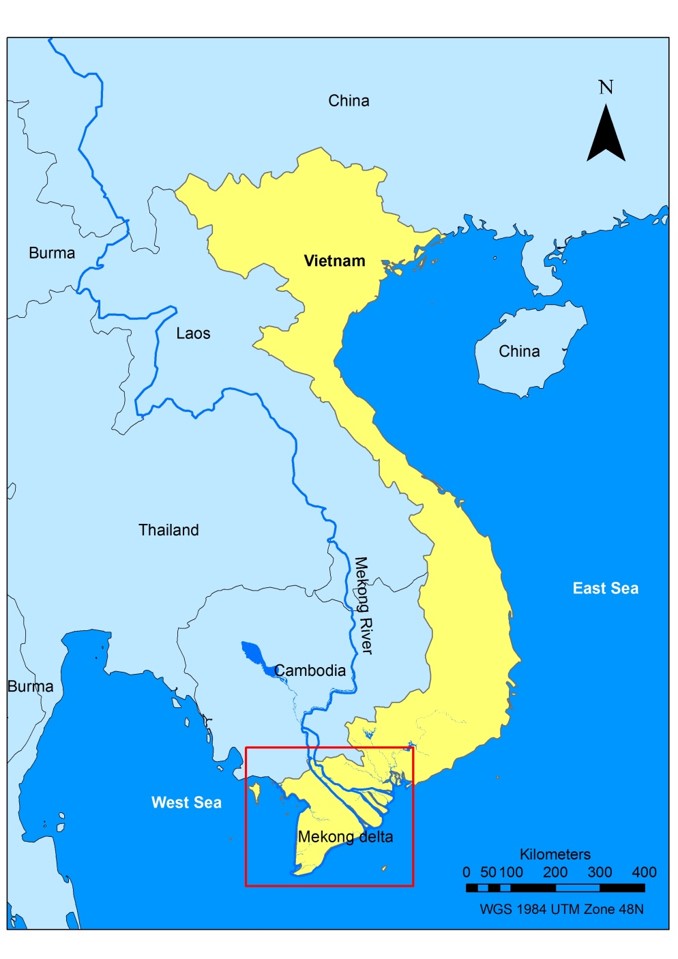Ca Mau peninsula, Vietnam
The MD looks back on a short geological history of approximately 10,000 years, whereby the building and transformation need to be understood as continuous processes.
With a total area of about 39,000 km2, the MD extends from its top point to the cambodian border showing a significantly low surface slope with a total height difference of approximately 2.5 m.
As a result of the transport processes of extremely fine-grained material from the upper Mekong River, the
delta body could continue to grow. However, the processes described have been superimposed by man-made activities, having strong negative effects on the former "quasi-equilibrium state".
|
The impact of antropogenic activities on the MD: Overexploitation of the groundwater resources: Contamination of surface and groundwater: |
|
Conversion of weirs, locks and dams
The expansion of dams in the middle part of Mekong River has brought the strongest destabilizing influence on the entire MD. Large parts of the bed-load and debris transported in the river as well as the suspended solids are kept in the reservoirs. As a result of the river water abstraction for industry and agriculture, the annual discharge of the river has already significantly been reduced (about 30 % less annual average discharge decrease compared to the times without dams). This directly reduces the solid matter transport capacity to feed the MD with sediments.
Sand mining:
In the Mekong region, dredging of sand is carried out along the river branches for the production of building and construction materials. The volumes taken annually to the river are comparable to the mean annual solid mass input by the river itself. The extraction points and their quantities are distributed in an unregulated manner.
Groundwaterwells:
Over 555.000. groundwaterwells abstract over 2 Mio. m3 water from the aquifers of the MD daily. This leads to a reduction of the groundwater level resulting in a drop of hydrostatic pressure of several meters in individual aquifers. The stability condition of the total Delta has suffered and eventually reached imbalance through out the past years.
|
The global climate change sends signals that will influence the quasi-balance of the delta: As a result of the climatic variations, scientists estimate a worldwide annual rise in sea level of around 3 mm. In the long term, this effect might, lead to a measurable backwater in the delta. However, this effect alone could also be neglected in the long term through appropriate infrastructure and counter measures. Under the climate change, conditions in the Mekong catchment area, the annual precipitation distributions and intensities as well as the entire evapotranspiration are changing. The intensity of drought and flood periods will increase the impact on sediment transport mechanisms even more due to increased irregularities.
|
 Figure 2: Waterflows and sediment transport of the Meckong Delta region Figure 2: Waterflows and sediment transport of the Meckong Delta region |

 Figure 1: Overview map, Vietnam (Vu und Klinger 2017)
Figure 1: Overview map, Vietnam (Vu und Klinger 2017)